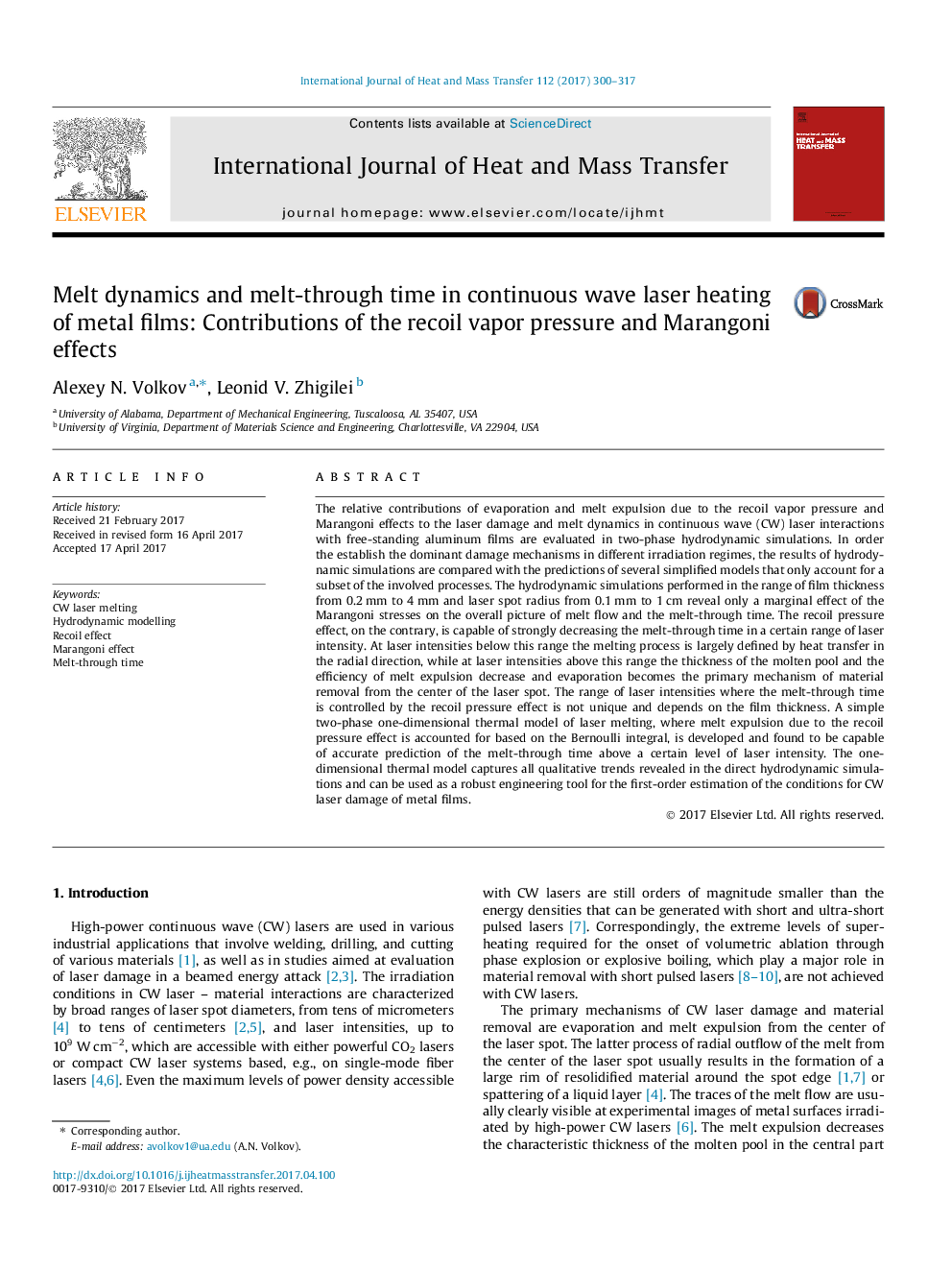| کد مقاله | کد نشریه | سال انتشار | مقاله انگلیسی | نسخه تمام متن |
|---|---|---|---|---|
| 4993660 | 1458029 | 2017 | 18 صفحه PDF | دانلود رایگان |
عنوان انگلیسی مقاله ISI
Melt dynamics and melt-through time in continuous wave laser heating of metal films: Contributions of the recoil vapor pressure and Marangoni effects
ترجمه فارسی عنوان
دینامیک ذوب و زمان ذوب شدن در گرم شدن لیزر پیوسته از فیلم های فلزی: مقادیر فشار بخار عقب و اثرات مارنگونی
دانلود مقاله + سفارش ترجمه
دانلود مقاله ISI انگلیسی
رایگان برای ایرانیان
موضوعات مرتبط
مهندسی و علوم پایه
مهندسی شیمی
جریان سیال و فرایندهای انتقال
چکیده انگلیسی
The relative contributions of evaporation and melt expulsion due to the recoil vapor pressure and Marangoni effects to the laser damage and melt dynamics in continuous wave (CW) laser interactions with free-standing aluminum films are evaluated in two-phase hydrodynamic simulations. In order the establish the dominant damage mechanisms in different irradiation regimes, the results of hydrodynamic simulations are compared with the predictions of several simplified models that only account for a subset of the involved processes. The hydrodynamic simulations performed in the range of film thickness from 0.2Â mm to 4Â mm and laser spot radius from 0.1Â mm to 1Â cm reveal only a marginal effect of the Marangoni stresses on the overall picture of melt flow and the melt-through time. The recoil pressure effect, on the contrary, is capable of strongly decreasing the melt-through time in a certain range of laser intensity. At laser intensities below this range the melting process is largely defined by heat transfer in the radial direction, while at laser intensities above this range the thickness of the molten pool and the efficiency of melt expulsion decrease and evaporation becomes the primary mechanism of material removal from the center of the laser spot. The range of laser intensities where the melt-through time is controlled by the recoil pressure effect is not unique and depends on the film thickness. A simple two-phase one-dimensional thermal model of laser melting, where melt expulsion due to the recoil pressure effect is accounted for based on the Bernoulli integral, is developed and found to be capable of accurate prediction of the melt-through time above a certain level of laser intensity. The one-dimensional thermal model captures all qualitative trends revealed in the direct hydrodynamic simulations and can be used as a robust engineering tool for the first-order estimation of the conditions for CW laser damage of metal films.
ناشر
Database: Elsevier - ScienceDirect (ساینس دایرکت)
Journal: International Journal of Heat and Mass Transfer - Volume 112, September 2017, Pages 300-317
Journal: International Journal of Heat and Mass Transfer - Volume 112, September 2017, Pages 300-317
نویسندگان
Alexey N. Volkov, Leonid V. Zhigilei,
